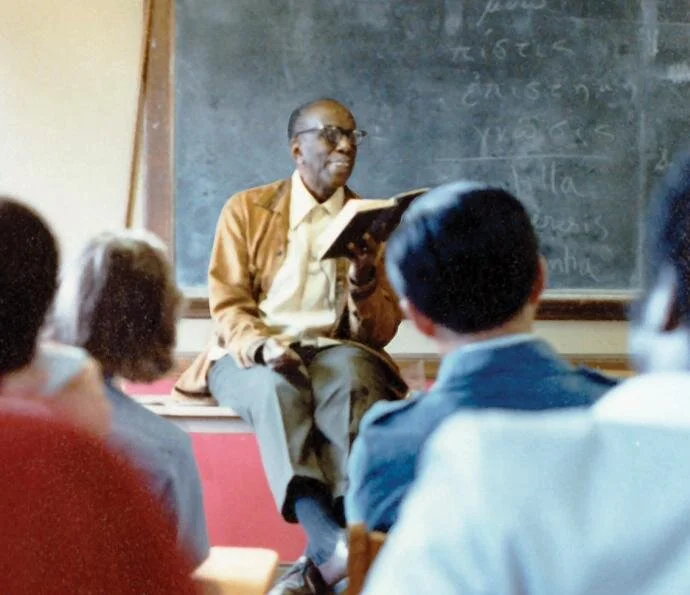Friday Reflection II: The Unfamiliar Poetic Soul of Physician-Writer S. Weir Mitchell
Dr. Silas Weir Mitchell
These Friday Reflections have revealed startling correspondences that never might have come to light without the focus afforded by lockdown. That’s especially true for today’s pair.
African-American activist, educator, and writer James Weldon Johnson (1871-1938) and white Philadelphia “literary physician” Silas Weir Mitchell (1829-1914) lived 50 years apart, with such differences that you’d never compare them unless you looked at their work. Both wrote and published highly regarded poetry. Johnson’s poems reside at the heart of his mission, as a celebration of Black history and culture, often in Black everyday language, contributing enormously to the early 20th-century Harlem Renaissance.
Most know Mitchell from recent heated debates about his gendered approach to treatment for emotional problems (then called “neurasthenia”) that was widely accepted and used at the time. He devised a Rest Cure at home for women (especially writers like Virginia Woolf and Charlotte Perkins Gilman). For men, Mitchell instead prescribed the West cure, manly activity in rugged nature and ranch life Out West. Among his own male patients for such: Thomas Eakins, Walt Whitman, Theodore Roosevelt, and himself.
Mitchell’s poetry, however, reveals a compelling, new dimension that links it closely to some of Johnson’s. Both wrote poetry that places the Christian divine at its center and is often Christian, if not biblical in form: Johnson’s wonderful The Creation is one such; see Dawn Salvaterra’s online reading on this website last Wednesday. Perhaps the best known is his Lift Every Voice and Sing that, Psalm-like in voice, is often described as a poem later put to music. But Johnson later remembered writing it as lyrics for his brother’s score, to be sung by Black schoolboys on Lincoln’s birthday in 1900. Either way, this piece still moves many as both a venerated poem and song, adopted by the NAACP and eventually considered the Black National Anthem.
Like Johnson’s, much of Mitchell’s poetry takes openly Christian forms (prayers, canticles, psalms) or treats biblical characters (Barabbas) to present a profound inquiry into human history and experience, mortality, humanity’s relationship with God, and the sheer wonder of life and divine creation.
Mitchell’s poetic difference from Johnson’s is in his alternative focus. Some of his work is written for a child, such as St. Christopher. Mitchell, like Johnson, was thus also a teacher, informal but sustained, writing short pieces in simple, engaging, and sonorous language. Several poems instead highlight children, for Mitchell wondrous creatures beloved by Christ and God. In the harrowing In the Valley of the Shadow of 1890 (invoking Psalm 23), written in older biblical language, we share the bittersweet final moments of a Christian centurion and his little daughter before they meet the lions in Rome’s Circus Maximus. As they leave their dark cell for the arena, “. . . fell God’s sunlight on the child:/For a gentle voice above them murmured, ‘Forth, and have no fear,’/And the little maiden answered, ‘Lo Christ Jesu, I am here!’”
Mitchell’s own tribute to Lincoln of 1891 startlingly celebrates Christ’s bond with even childlike adults. The poet rendered Lincoln as Prometheus bound to the rock of State, grim and suffering but otherwise, like Martin Luther, gay and great: “And, ever simpler, like a little child/Lived in unconscious nearness unto Him/Who always on earth’s little ones hath smiled.”
There may be a strong biographical component here: Mitchell loved children but especially his only daughter, his last child and only one with second wife Mary: Maria Gouverneur Mitchell, born 1876. Though poems dedicated to “a child” reached many children when published, he may have written them for Maria: for example, the afore-mentioned St. Christopher; Of a Poet; and A Child’s Prayer. Maria also may have inspired the doomed Christian girl talking with Christ in In the Shadow of the Valley.
This last poem was published less than ten years before Maria herself died of diphtheria at 21 in 1898. Mitchell wrote several poems to confront his grief, including the widely reviewed memorial Ode on a Lycian Tomb (1899), Keatsian reflections on the Sidon Mourners sarcophagus (Imperial Museum, Istanbul) seen on later travels. The ode claims the tomb moves him but he counts on his own God to address his grief and unite him with his cherished departed in the afterlife.
Saint-Gaudens’ Angel of Purity (left, on dark panel) in the new Tiffany Chancel, 1917
Maria was buried in the simple family plot at The Woodlands. Instead, her parents commissioned a monumental figurative marble memorial to her for St. Stephen’s, where she not only worshipped but taught Sunday school, formalizing her father’s teaching role. The couple’s’ choice of sculptor: their friend, the eminent Augustus Saint-Gaudens who executed Mitchell’s portrait relief in 1884. When completed in 1902, the marble was installed on St. Stephen’s east wall north of the altar, facing the family’s front-row pew.
The relief moved to the Philadelphia Museum of Art in 2005, where it presides over galleries leading to the American Wing on the first floor.
Saint-Gaudens Angel of Purity, 1902
The forms of the Mitchell memorial almost exactly replicate Saint-Gaudens’ Amor Caritas nearing completion when Maria died, Several bronzes of the latter were executed from a prototype that was modified for different projects over decades. The Mitchell memorial differs from Amor Caritas mostly in its material—marble—and inscriptions. The latter involve a simple epitaph and an inscription in the plaque held overhead, caryatid-like, from Matthew 5: 8: “Blessed are the/Pure in Heart for/they shall see God.” The Mitchell Memorial also returns the composition to its original funerary purpose, as monumental angel caryatids, c. 1879, for the Edwin D. Morgan family tomb, Cedar Hill Cemetery, Hartford, CT (burned 1884 before completion).
The Angel of Purity, as Mitchell and the sculptor both called it, corresponds to the sixth Jewish-Christian angel, Shushienae, likely recruiting the white marble to convey radiant moral purity. The Mitchells thus eschewed resemblance and mourning to honor a virtue that Scripture promised would bring Maria to God.
For more than a century, the 8-foot high Mitchell Angel of Purity gleamed by the chancel, its powerful simple forms channeling strong rhythms and rippling decorated robes, around the corner from the visionary Burd Children’s Memorial to the north. Both are ambitious memorials to lost children, featuring spectacular winged angels that promise ascent to heaven with different virtues, from different grieving families. Once museums and churches reopen as we find ways to live responsibly with Coronavirus, we’ll be able to visit both!
—Suzanne Glover Lindsay, St. Stephen’s historian and curator









